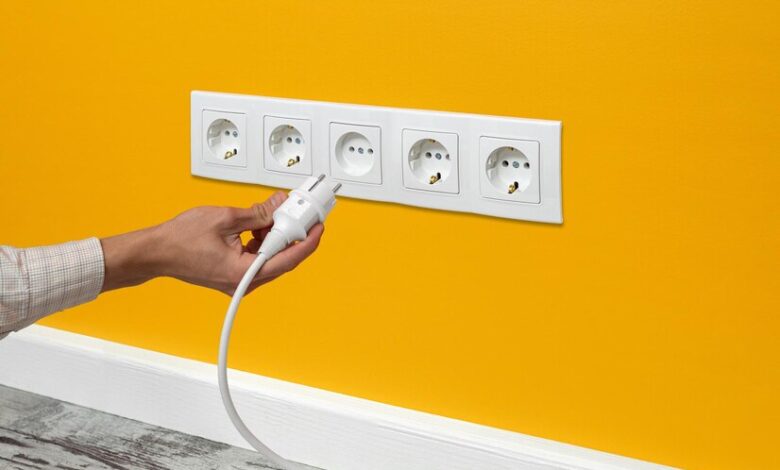Mastering 4-Way Switch Wiring for Perfect Home Lighting

Switching up your home lighting can be an electrifying experience, especially with the versatility that 4-way switches offer. Whether you’re a DIY enthusiast, an electrician, or a homeowner looking to enhance your living space, understanding how to wire a 4-way switch is crucial. In this comprehensive guide, we’ll walk you through everything you need to know about 4-way switch wiring. From the basics to troubleshooting, we’ll ensure you’re well-equipped to light up every corner of your home efficiently and safely.
Introduction to 4-Way Switches
In the world of home lighting, 4-way switches are game-changers. They allow you to control a single light or a set of lights from multiple locations. Imagine being able to turn off your living room lights from the hallway or the top of the stairs. This convenience is particularly useful in larger homes or spaces with multiple entry points.
But why is it important to understand 4-way switch wiring? For one, proper wiring ensures that your lighting setup functions correctly and safely. Faulty wiring can lead to flickering lights, non-functional switches, or even electrical hazards. By mastering 4-way switch wiring, you’re not only enhancing your home’s functionality but also ensuring safety and efficiency.
Understanding the Basics of 4-Way Switches
What is a 4-Way Switch?
A 4-way switch is a type of electrical switch that enables you to control a light from three or more locations. It works in conjunction with two 3-way switches. While a single-pole switch has two terminals and a 3-way switch has three, a 4-way switch has four terminals. These terminals connect to traveler wires that carry current between the switches.
How Does It Differ from 3-Way and Single-Pole Switches?
Single-pole switches are the most basic, controlling a light from one location. In contrast, 3-way switches allow you to control a light from two different locations. A 4-way switch extends this functionality, enabling control from three or more locations. The key difference lies in the wiring complexity and the number of terminals.
When and Why to Use a 4-Way Switch
4-way switches are ideal for larger spaces or areas with multiple entry points. They are commonly used in long hallways, staircases, and large rooms. The ability to control lighting from various locations adds convenience and enhances safety, making it easier to illuminate dark areas without backtracking to a single switch.
Step-by-Step Guide on How to Wire a 4-Way Switch
Tools and Materials You’ll Need
Before you start, gather the following tools and materials:
- Screwdrivers (flathead and Phillips)
- Wire strippers
- Voltage tester
- Electrical tape
- 4-way switch
- Two 3-way switches
- Electrical box
- Wire connectors
Step 1: Turn Off the Power
Safety first! Turn off the power at the circuit breaker to the switches you’ll be working on. Use a voltage tester to ensure no current is flowing through the wires.
Step 2: Install the 3-Way Switches
Install one 3-way switch at the first location and another at the last location. Connect the common terminal of the first 3-way switch to the power source, and the common terminal of the second 3-way switch to the light fixture.
Step 3: Connect the Traveler Wires
Run traveler wires between the two 3-way switches and the 4-way switch. Connect the traveler wires to the corresponding terminals on each switch. The traveler wires are usually red and black but always double-check your wiring diagram.
Step 4: Install the 4-Way Switch
Position the 4-way switch between the two 3-way switches. Connect the traveler wires to the four terminals on the 4-way switch. Ensure the connections are secure and insulated with electrical tape.
Step 5: Test the Setup
Turn the power back on and test the switches. Ensure that you can control the light from each switch location. If everything works as expected, secure the switches into their respective electrical boxes.

Common Mistakes in Wiring 4-Way Switches
Incorrect Wire Placement
One of the most frequent mistakes is placing wires on the wrong terminals. Double-check your wiring diagram and ensure each wire is connected to the correct terminal. Miswiring can lead to non-functional switches or flickering lights.
Using the Wrong Type of Switch
Ensure you’re using a 4-way switch for the middle location and 3-way switches for the ends. Using the wrong type of switch disrupts the circuit and prevents proper functionality.
Poor Connections
Loose or poorly connected wires can cause intermittent issues or electrical hazards. Make sure all connections are secure and insulated with electrical tape.
Troubleshooting Tips for 4-Way Switch Issues
Flickering Lights
Flickering lights often indicate loose connections. Check all wire connections and tighten any that are loose. If the problem persists, consider replacing the switch.
Switches Not Working
If the switches aren’t working, turn off the power and recheck your wiring. Ensure all wires are connected to the correct terminals and that there are no breaks in the circuit.
Unexpected Behavior
If the lights turn on and off unexpectedly, there may be a short circuit. Inspect the wiring for any signs of damage and replace any faulty wires.
Safety Reminders and Best Practices
Before You Begin
Always turn off the power at the circuit breaker before starting any electrical work. Use a voltage tester to ensure no current is flowing through the wires.
During the Process
Keep your work area dry and avoid standing on wet surfaces. Wear rubber-soled shoes for added insulation. Use insulated tools to minimize the risk of electrical shock.
After Completion
Double-check all connections before turning the power back on. Test the switches to ensure they function correctly. If you’re unsure about any step, consult a professional electrician.
Real-Life Applications and Creative Lighting Setups
Hallways and Staircases
4-way switches are perfect for long hallways and staircases with multiple entry points. You can control the lighting from either end, enhancing convenience and safety.
Large Living Spaces
In large living rooms or open-plan spaces, 4-way switches allow you to control the lighting from various points, creating a versatile and adaptable lighting setup.
Outdoor Areas
Use 4-way switches for outdoor lighting to control pathways and garden lights from multiple locations. This setup adds a layer of security and convenience.
Conclusion
Understanding how to wire a 4-way switch is a valuable skill for any DIY enthusiast, electrician, or homeowner. It enhances the functionality of your home lighting and ensures safety and efficiency. By following the steps outlined in this guide, you can confidently tackle your 4-way switch wiring project.
If you’ve found this guide helpful, we’d love to hear about your experiences! Share your stories, ask questions, or offer suggestions. For further assistance, feel free to reach out to our community of experts and enthusiasts. Happy wiring!



